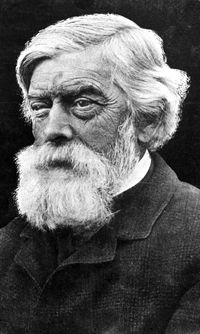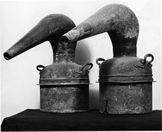|
History -Chemical History of UCL1855 A Williamson
Bonding in organic compounds at that time was thought to be of either the water type, as in alcohols, ROH, or of the radical type, as in ethers which would be given the formula RO. But Williamson, by his ether synthesis, showed that mixed ethers, with two different alkyl groups, could be prepared. Ethers thus has to have the water-type formula ROR', and oxygen had the equivalent weight of 8 but the atomic weight of 16. By this type of argument he established and rationalised the structures of many of the families of simple organic compounds. Thus, in 1850 he predicted the existence of acetic anhydride, which was prepared in 1851.
Later on Williamson, again with people such as Liebig, was responsible for the introduction of much of the glassware which we are familiar with today, except that it was usually fitted together with corks rather than ground glass joints. Standard joints, blown in a mould, as we know them today did not come into use until the middle of the last (20 th ) century. Towards the end of his period as Head of Department, Williamson became very much involved in College and University politics, and his research suffered. This was the period when the other London colleges - Kings, Birkbeck, Queen Mary, what is now Imperial College, and so on were combined into a federal university, and presumably Williamson felt the need to fight the University College corner. This page last modified 20 September, 2010 |


